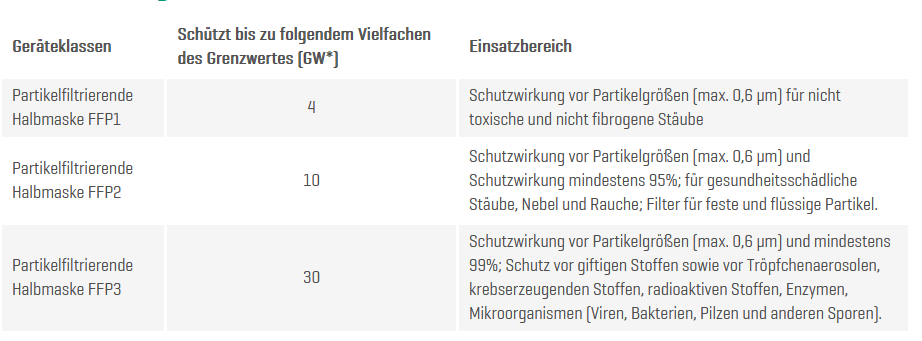Instructions for use FFP2 respirators EN 149:2001 + A1:2009
Our respirator fulfils the requirements of the European standard EN 149:2001+A1:2009, filtering half masks for protection against particles. It has successfully passed the performance tests formulated there for filter permeability, flammability, breathing resistance and total inward leakage and corresponds to protection class FFP2. In addition, the mask has successfully passed the stress test in accordance with EN 13274-7 (test method with paraffin oil). The respirator fulfils the safety requirements of Regulation (EU) 2016/425, Personal protective equipment.
Intended use of FFP2 respirators
The particle-filtering half mask is a complete respirator, which consists entirely or predominantly of filter material. Particle-filtering half masks are used exclusively for respiratory protection against non-volatile solid or liquid particles (dusts, fumes, aerosols, aerosol mists).
Application examples for FFP2 respirators
Pandemic precautions and building and ancillary trades: cement work, plastering, tiling, roofing, building and ancillary trades - roof insulation: glass and mineral fibres, building and ancillary trades - masonry: cutting, drilling, demolition, building and ancillary trades - filler/filler: sanding, disposal/cleaning: Sweeping floors, Woodworking: sanding/brushing off paint and woodworking - Softwood: sanding and cutting
Instructions for putting on an FFP2 respirator mask
Be sure to wash your hands thoroughly before putting on and after taking off the mask! (At least 30 seconds)

Protective effect of FFP respirators

Instructions for use
Put on the respirator as instructed and check that it is tight before entering the contaminated area. To check for leaks, hold both hands over the respirator and exhale forcefully. As you do so, pressure should build up inside the respirator. If air escapes from the edges of the mask, readjust the metal reinforcement of the respirator to your face and/or increase the tension of the elastic bands by tying small knots. Repeat this test procedure until the mask fits correctly.
